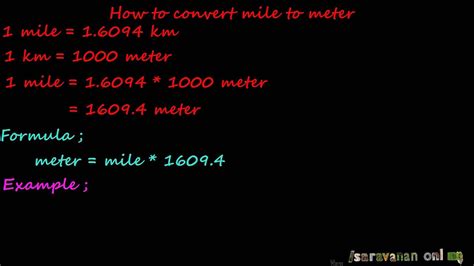In the realm of automotive measurements, the conversion between miles per hour (mph) and meters per second (m/s) is a fundamental calculation for understanding vehicle dynamics and speed limits. Whether you’re on a road trip in the United States or navigating the Autobahn in Germany, converting between these units is essential for safe and efficient travel.

Why the Conversion Matters
Understanding the conversion between mph and m/s is not only a matter of convenience but also a safety concern. Many countries, including Canada and most of Europe, utilize the metric system, where speed is expressed in m/s. Therefore, travelers need to be able to accurately convert between units to adhere to local speed regulations and avoid penalties.
Step-by-Step Conversion Method
Converting from mph to m/s is a straightforward process. Follow these steps:
- Multiply the mph value by 1.60934.
- Divide the result by 3.6.
For example, to convert 60 mph to m/s:
- 60 mph x 1.60934 = 96.5604 km/h
- 96.5604 km/h ÷ 3.6 = 26.8226 m/s
Conversion Table
To simplify the conversion process, refer to the following table:
| Miles per Hour (mph) | Meters per Second (m/s) |
|---|---|
| 10 | 4.47 |
| 20 | 8.94 |
| 30 | 13.41 |
| 40 | 17.88 |
| 50 | 22.35 |
| 60 | 26.82 |
| 70 | 31.29 |
| 80 | 35.76 |
| 90 | 40.23 |
| 100 | 44.70 |
Conversion Applications
Beyond its use in automotive measurements, the conversion between mph and m/s finds applications in various fields:
- Engineering: Calculating the speed of objects in mechanical systems.
- Aviation: Determining the airspeed of aircraft.
- Sports: Measuring the velocity of athletes in running, cycling, and other sports.
- Scientific Research: Studying the motion of objects in physics experiments.
Innovative Applications
The conversion between mph and m/s can also inspire new applications and technologies. For example, the concept of “metrics hacking” involves manipulating data from various sources to gain insights and make informed decisions. By converting units and combining data, metrics hackers can unearth patterns and correlations that may not have been apparent before.
Conclusion
Understanding the conversion between mph and m/s is crucial for safe and accurate speed measurements, whether you’re traveling abroad or conducting scientific experiments. By following the step-by-step method and referring to the conversion table provided, you can seamlessly convert between these units and confidently navigate the roadways. As the world becomes increasingly interconnected, the ability to convert between different measurement systems is essential for global communication and collaboration.
